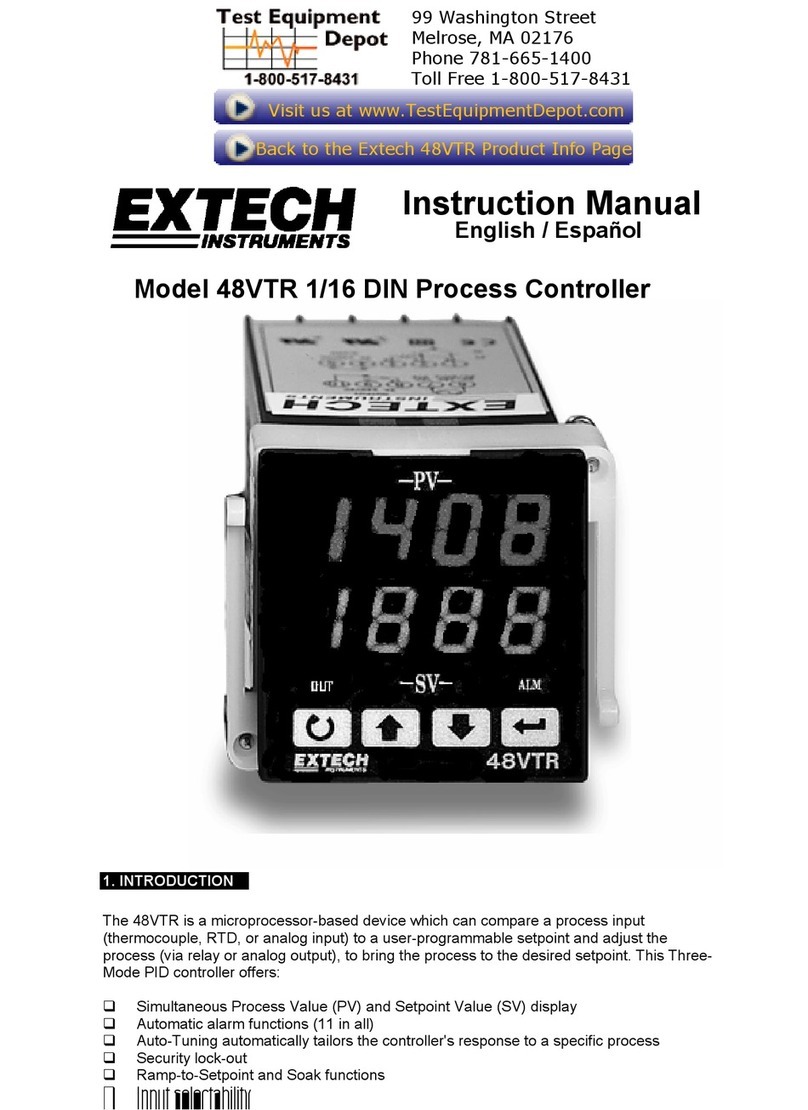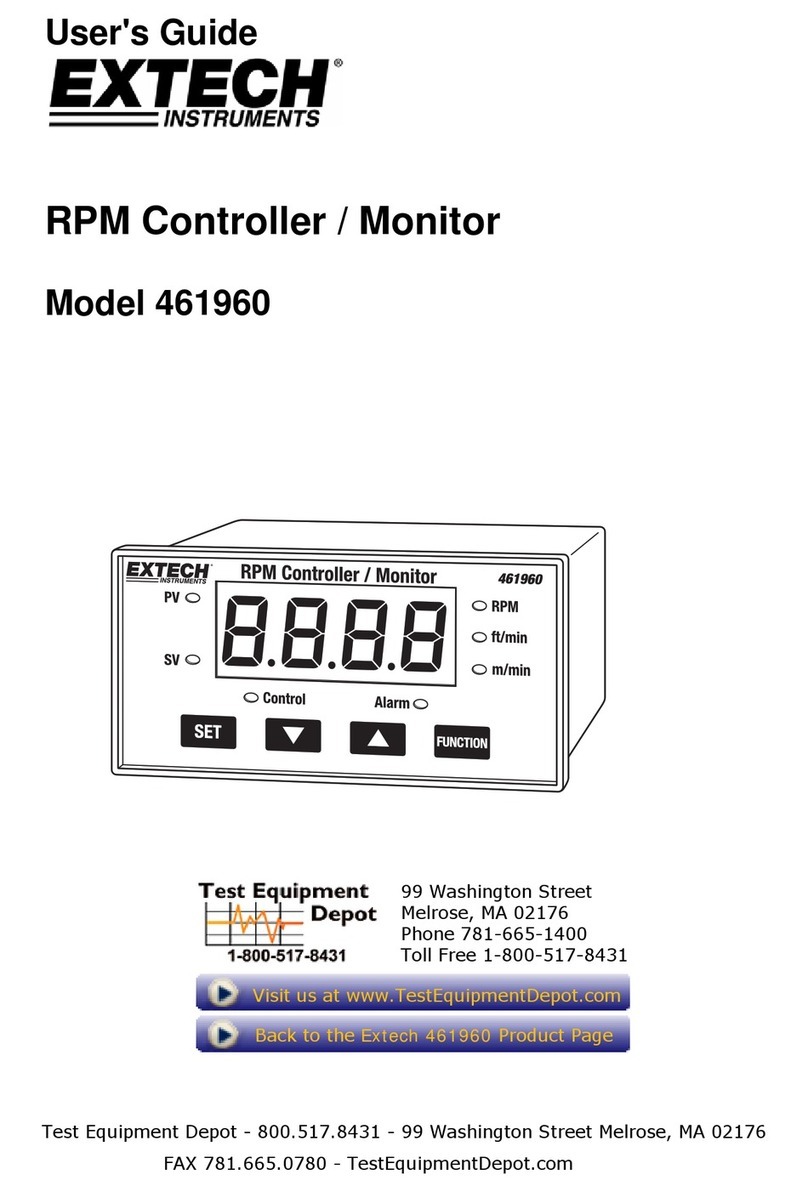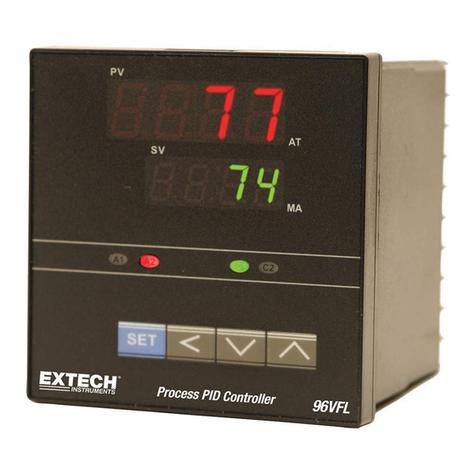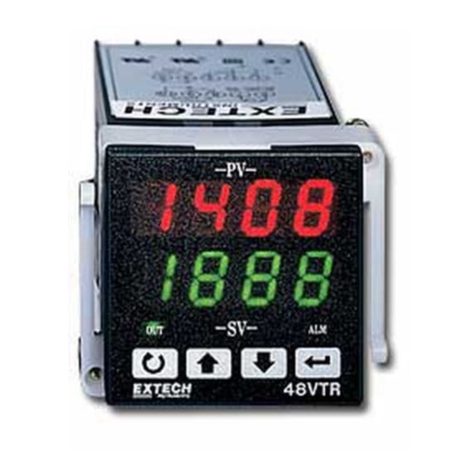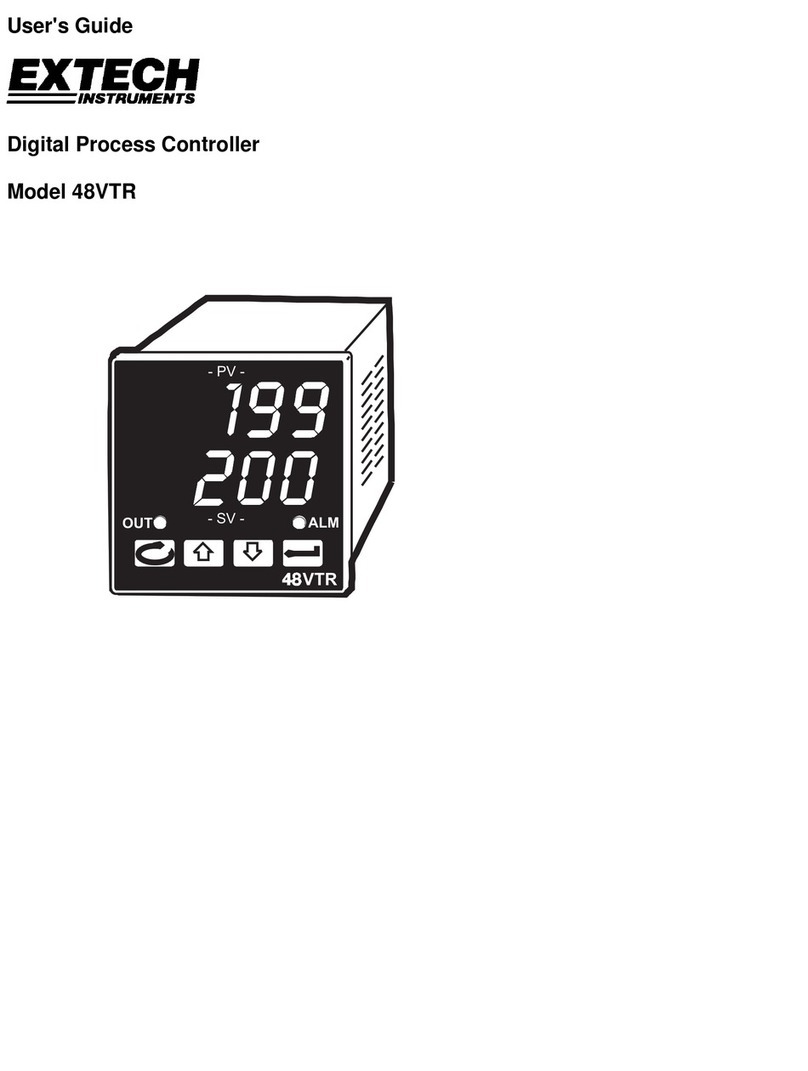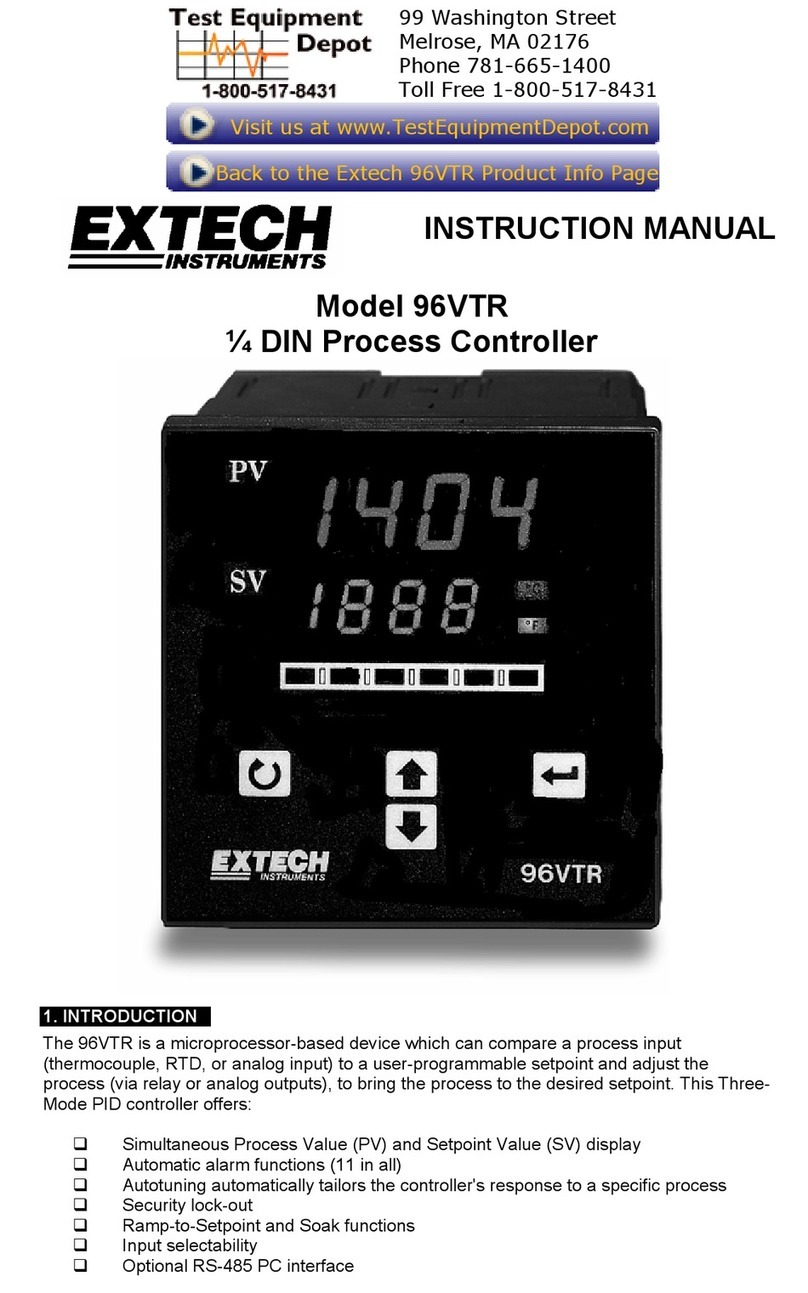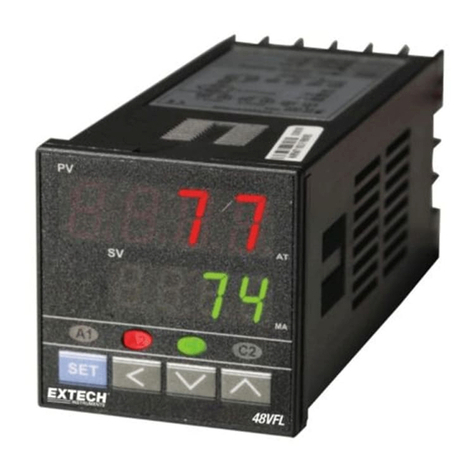Process Control Preparation
Connect the Inputs
The input types (thermocouple, RTD, analog) are hardware dependent. The part number
ordered, and the product label indicate the input type. If you are uncertain, please contact
Extech. Wire the input as described in the Wiring section.
Connect the Outputs
The output types (relay, dc trigger, analog) are hardware dependent. The part number
ordered, and the product label indicate the output type. If you are uncertain, please contact
Extech. Wire the output as described in the Wiring section.
Program the Controller
The four programming menus contain critical settings that can optimize the control of your
process. Success depends largely on configuring and tuning the controller correctly. Refer to
the Programming Menu and Process Control Operation sections for details.
Process Control Operation
Relay Output Control
The control relay is a mechanical, single-pole/double-throw, form C contact, and, by definition,
can only be in one of two states, ON or OFF. Control relays are wired in series with the control
equipment (heater, pump, etc.) and requires AC power to operate. The ON-OFF and Time
Proportioning control methods, explained below, apply to Relay output control.
Pulsed DC Trigger Option
The DC trigger supplies a 29V pulse from terminals 8 and 9 and is an ON-OFF control type. The
ON-OFF and Time Proportioning control methods, explained below, apply to DC Trigger
control. Caution: With DC trigger installed do not connect AC voltage to terminals 8 or 9.
Analog Output Option
With the analog output option, terminals 8 (+) and 9 (-) supply 4 to 20mA to the process. The
controller regulates the output to bring the process (PV) to setpoint (SV).
Unlike ON-OFF and Time Proportioning control, the 4 to 20 signal is a linear output where the
0 to 100% output variations regulate the 4 to 20mA signal (0% power = 4ma, 50% power =
12ma, 100% = 20mA, and so on).
To use the analog output, ensure that ‘Cycle Time’(‘Ct’in the 3rd Menu Level) is set to ‘0’
Using ON-OFF Control
ON-OFF is the simplest form of control, where the controller output is OFF at setpoint and ON
away from setpoint. To use ON-OFF control, set ‘Pb’ (2nd Menu) to ‘0’. Use the Hysteresis
setting (‘Hyst’in the 3rd Menu) to create a ‘dead band’around the setpoint to minimize relay
chatter.
